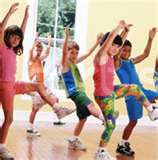
“One day, all Americans will be physically active and then will live, work, and play in environments that facilitate regular physical activity.” This is the stated vision of the US National Physical Activity Plan (NPAP), and it speaks to the importance of targeting specific settings. Success of the NPAP will come, in large part, as the result of local actions that target specific settings such as schools, workplaces, community streets, and parks. The NPAP is chock-full of Strategies and Tactics aimed at specific settings. Here are just a few examples of Strategies and Tactics taken directly from the NPAP that target such settings.
In targeting the workplace, the first strategy from the Business and Industry Sector aims to identify, summarize, and disseminate best practices, models, and evidence-based physical activity interventions in the workplace. Within this strategy are several, more specific tactics including: Recognize organizations that are examples of best practices; Recruit key business and industry leaders to play central roles in influencing their peers. Are there businesses that you are aware of that can serve as models of an active workplace for other employers?
Within the first strategy from the Parks, Recreation, Fitness and Sports sector there is an emphasis on local facilities providing access for all members of the population. One specific tactic is: Provide programs in parks, recreation, fitness, and sports that are appropriate for individuals of both genders, diverse cultures, abilities, developmental stages and needs and that have demonstrated positive physical activity outcomes. Do you know of programs that have demonstrated positive outcomes, meeting the needs of a diverse community?
Increasing physical activity through active transportation is a very attractive option on many levels. The NPAP has a sector devoted to this which includes the following tactic: Support and increase incentives for community projects to create safe and accessible active transportation networks, including not just roadways with pedestrian, bicycle, and transit accommodation, but also networks of greenways, trails, and multi-use pathways. How would you go about rallying support for such initiatives in your community?
Because of their broad reach, schools represent an ideal target environment for increasing physical activity in youth. Within the NPAP’s Education sector, there are many specific recommendations for doing just that. One such recommendation includes working with teachers through requiring pre-service and continuing education for physical education and elementary classroom teachers to deliver high-quality physical education and physical activity programs. As a concerned parent, school board member, or citizen, what steps are you taking to ensure regular physical activity for all students in your area?
Part of the process of evaluating the NPAP is documenting actions targeting specific settings. Based on the examples you see above, or any other of the NPAP’s strategies and tactics, please tell us what is happening in your area by going to http://www.physicalactivityplan.org/contact.php.





